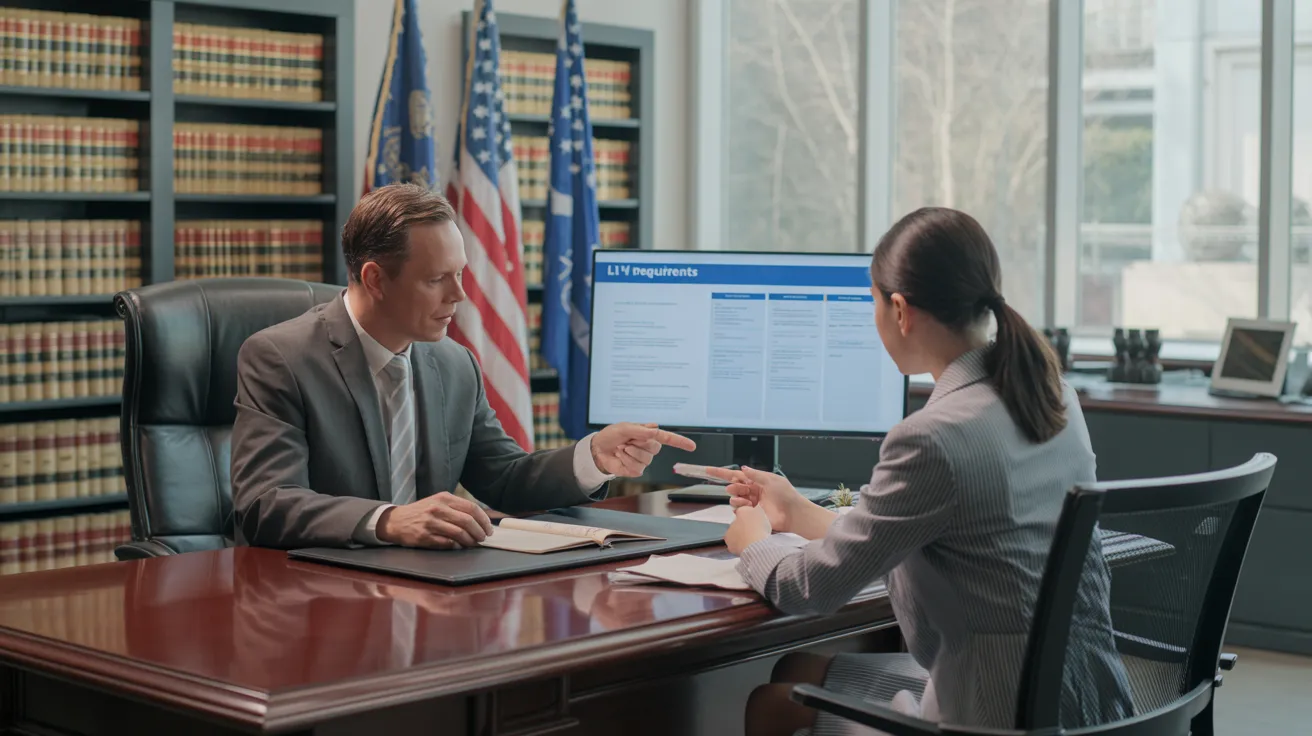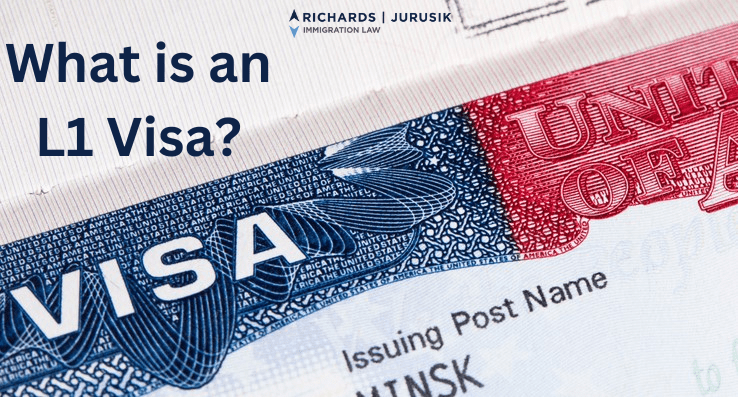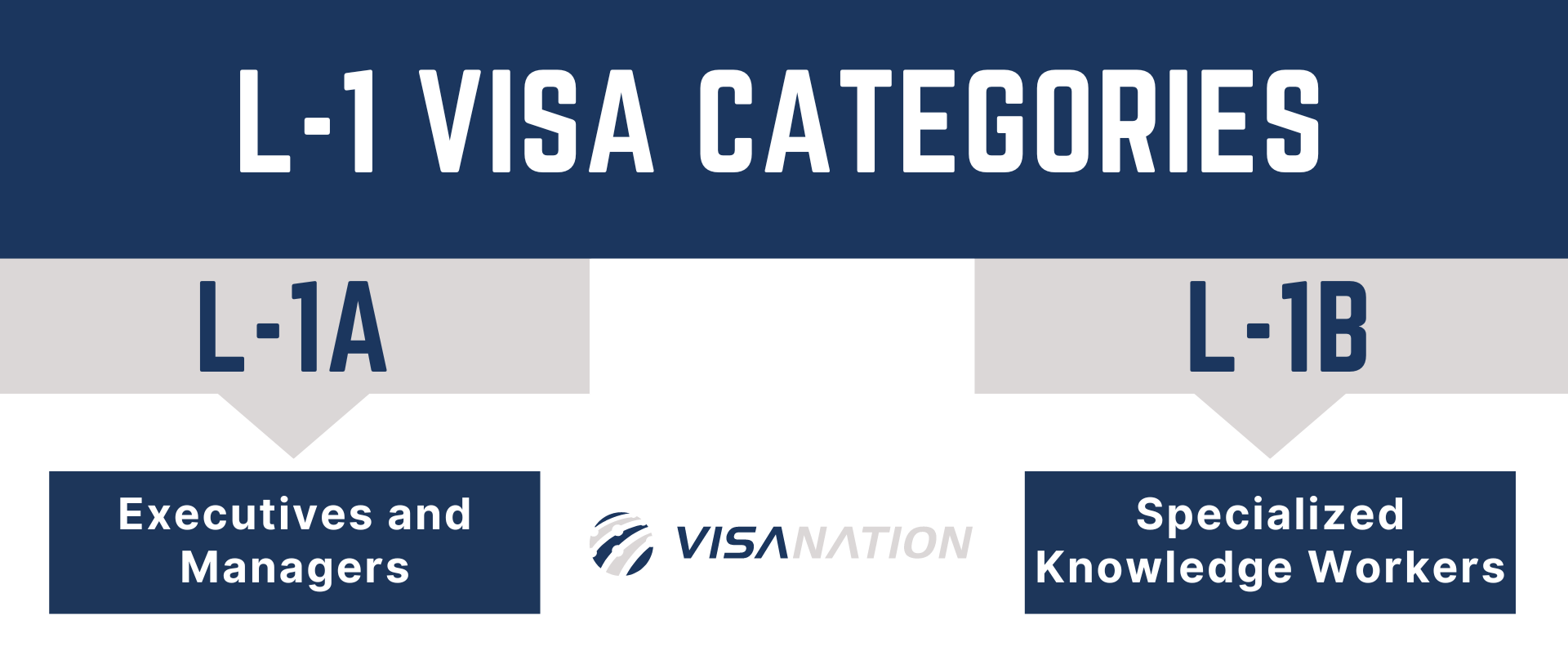Start L1 Visa Today
Unlocking Opportunities: A Comprehensive Guide to the L1 Visa Process
The L1 visa procedure offers a vital pathway for international companies looking for to move crucial employees throughout borders. Recognizing the subtleties of qualification requirements, the distinctions in between L-1A and L-1B visas, and the intricacies of the application process can greatly impact a candidate's success. Steering this facility landscape is not without its challenges, and cautious focus to documents and company sponsorship is necessary. As we discover the key elements of this process, the techniques for getting over prospective challenges will become evident, exposing exactly how notified preparation can open a globe of chances.
Recognizing the L1 Visa
Understanding the L1 visa requires identifying its relevance as a vital device for multinational companies looking for to transfer knowledgeable employees between worldwide offices. This non-immigrant visa group facilitates the activity of executives, managers, and specialized expertise employees to the USA, consequently allowing organizations to keep operational continuity and harness worldwide talent successfully. The L1 visa is divided into 2 key categories: L-1A for managers and execs, and L-1B for staff members possessing specialized knowledge.The L1 visa offers an essential duty in improving a firm's one-upmanship in the international marketplace. By permitting business to transfer their essential employees, businesses can assure that essential jobs are handled by certified individuals who are currently acquainted with the company's society and operational processes. L1 Visa. This interior transfer mechanism not only cultivates understanding sharing however also advertises technology and cooperation across borders.Moreover, the L1 visa is frequently favored for its reasonably simple application procedure compared to various other visa groups, as it enables dual intent, allowing owners to pursue irreversible residency while on a short-term job visa. This attribute makes the L1 visa particularly appealing for both employers and employees, as it streamlines the pathway for knowledgeable professionals to develop lasting residency in the USA
Qualification Requirements
Eligibility for the L1 visa depends upon several crucial requirements that assure both the employee and the company fulfill certain qualifications. This non-immigrant visa is created for multinational business to move employees from international workplaces to united state counterparts.Firstly, the employer has to be a qualifying organization, that includes a parent company, branch, associate, or subsidiary of a united state organization. The company has to have been doing company for at the very least one year both in the U.S. and abroad. This guarantees that the company has adequate operational security and a genuine presence.Secondly, the worker must hold a supervisory, exec, or specialized expertise position. For L1A visas, the applicant should demonstrate supervisory or executive certifications, while L1B visas concentrate on specialized expertise related to the organization's products, solutions, or procedures. Furthermore, the staff member must have worked for the foreign entity for at least one constant year within the last three years prior to their application.Lastly, the worker's duty in the united state need to straighten with their previous placement, making certain that their abilities and knowledge are leveraged for the firm's benefit.

Types of L1 Visas
The L1 visa category comprises 2 main types created to promote the transfer of employees within multinational firms: the L1A visa for supervisors and execs, and the L1B visa for employees with specialized knowledge. Each kind serves distinctive objectives and has particular qualification criteria.The L1A visa is tailored for individuals that hold managerial or executive placements within a company. This visa enables high-level staff members to transfer to a united state branch, subsidiary, or affiliate of the very same company. Applicants for the L1A visa have to demonstrate that they have actually been utilized in a managerial or executive capacity for at the very least one constant year within the previous three years before their application. Additionally, this visa provides a longer duration of keep, at first granted for three years, with the opportunity of extensions for up to seven years.In comparison, the L1B visa is meant for specialists with specialized knowledge pertaining to the company's products, services, or processes. To qualify, candidates have to prove that their knowledge is crucial to the company and that they have benefited at the very least one constant year within the last three years in a function that required this specialized expertise. The L1B visa is initially granted for three years, with expansions readily available for up to 5 years.Both visa types are crucial for companies looking for to enhance their global operations by leveraging experienced personnel, thus promoting development and effectiveness within the united state market.
Application Process
Guiding with the L1 copyright procedure entails a number of essential actions that need to be thoroughly complied with to ensure an effective result. The process begins with the U.S. employer, that have to initially develop eligibility by demonstrating a certifying connection with the foreign entity and confirming that the worker meets the certain demands for the L1 visa classification being sought.Once eligibility is verified, the employer launches the procedure by submitting Type I-129, the Application for a Nonimmigrant Worker, with the United State Citizenship and Migration Services (USCIS) This form has to be gone along with by a detailed summary of the task tasks to be executed, the business structure of both the united state and international entities, and the employee's credentials. It's important to confirm that all info is precise and total, as omissions or inaccuracies can result in hold-ups or denials.Upon authorization of the I-129 petition, the following step entails the worker requesting the L1 visa at a united state embassy or consular office in their home country. This stage calls for the conclusion of Kind DS-160, the Online Nonimmigrant copyright, and arranging an interview. During the interview, the candidate should offer proof sustaining their certifications and the company's petition.After the visa is provided, the employee can go into the United States to operate in the marked role. Overall, careful preparation and adherence to every step of the application procedure are vital for an effective L1 visa result.
Needed Documentation

Important Kinds Required
Maneuvering the L1 Visa procedure calls for careful attention to the essential forms and documentation needed for an effective application. The primary type needed is the Form I-129, Request for a Nonimmigrant Employee, which should be finished and submitted by the U.S. company (L1 Visa Requirements). This form outlines the details of the employment offer and the certifications of the worker looking for the L1 Visa.Alongside Kind I-129, the candidate will certainly require to complete Type I-539 if accompanying member of the family are additionally obtaining visas. In addition, the company has to give proof of the qualifying relationship between the united state entity and the foreign entity, frequently requiring the entry of corporate files such as write-ups of consolidation or financial statements.Moreover, it is vital to include the L Classification Supplement to Form I-129, which specifies the kind of L Visa being requested-- either L-1A for supervisors and executives or L-1B for employees with specialized expertise. Candidates must ensure that all forms are signed and dated appropriately, as insufficient submissions can lead to hold-ups or rejections. Appropriately setting up these important types lays the foundation for a smoother L1 copyright procedure
Supporting Evidence Needs
Supporting documents is essential for an effective L1 copyright, as it validates the insurance claims made in the request. Candidates have to supply a variety of records to show qualification for the visa, which is categorized into 2 primary types: proof of the qualifying partnership between the U.S. and foreign entities and evidence of the candidate's qualifications.To develop the partnership, applicants must submit paperwork such as business organizational graphes, economic statements, and proof of ownership. These papers confirm that the international company has a qualifying partnership with the U.S. company, whether as a moms and dad firm, subsidiary, branch, or affiliate.For the applicant's certifications, vital documents include a thorough work letter from the foreign employer, detailing the applicant's task title, responsibilities, and period of work. Additionally, academic credentials, such as levels and diplomas, need to be given to verify the candidate's competence in the appropriate area.
Company Sponsorship Documents
Employer sponsorship papers play an essential role in the L1 copyright process, as they verify the U.S. company's dedication to the candidate's employment in the United States. These papers are crucial for demonstrating the employer's eligibility to sponsor the applicant for the L1 Visa.Key records typically called for consist of an in-depth work letter from the U.S. employer, which outlines the job title, obligations, and the nature of the employment relationship. Additionally, the employer must provide proof of the firm's legitimacy, such as business licenses, income tax return, and business charts, illustrating the relationship in between the U.S. entity and the international company.Furthermore, evidence of the employee's certifying connection with the foreign firm is required. This may include paperwork evidencing the staff member's function in the international entity, such as pay stubs, employment agreement, or efficiency assessments.
Typical Challenges
Steering the L1 visa process offers a number of common difficulties that candidates must know (L1 Visa Qualifications). Secret issues commonly include strict documents needs, possible delays in handling times, and the necessity for rigorous legal compliance. Comprehending these obstacles can aid candidates much better prepare and mitigate dangers throughout their copyright trip
Paperwork Requirements
The L1 copyright procedure typically offers considerable challenges associated with documentation demands. Candidates have to give substantial documentation to develop eligibility, which can bring about confusion and possible delays. Key records consist of proof of a certifying connection between the U.S. and international employer, proof of the candidate's employment history, and comprehensive details about the job duty in the U.S.One typical difficulty is gathering enough evidence to show the nature of the qualifying relationship. Business usually battle to existing clear business charts or economic declarations that illustrate the link between the entities. On top of that, guaranteeing that letters of assistance from employers precisely show the applicant's work tasks and qualifications is vital, as obscure descriptions can lead to denials.Another problem emerges from the requirement for comprehensive work descriptions that align with the L1 visa classifications. Applicants must articulate not only their current duty but likewise their supervisory or customized expertise duties clearly. This requires an extensive understanding of both the candidate's placement and the regulatory language used in L1 applications.
Processing Dead Time
Experiencing hold-ups in processing times is a common difficulty encountered by L1 visa candidates, often leading to frustration and unpredictability. A number of variables add to these delays, consisting of high application quantities, raised analysis of applications, and management stockpiles within the U.S. Citizenship and Immigration Services (USCIS) Applicants might discover that handling times can vary considerably depending upon the service center managing their application, as each center has its own workload and performance levels. Additionally, the complexity of the candidate's case, such as the need for comprehensive documentation or information, can additionally extend wait times.In some circumstances, issues associated to the applicant's existing migration condition or previous visa background may additionally bring about added delays, as USCIS might need additional review or info. It is important for candidates to stay aggressive during this duration, keeping open communication with their companies and lawful representatives to deal with any possible concerns promptly.Understanding these handling time difficulties can aid L1 visa candidates plan for possible delays and minimize the effect on their change and job plans. Perseverance and diligence are important merits in maneuvering this complex procedure.
Lawful Compliance Issues
Many L1 visa applicants come across lawful conformity issues that can complicate their trip towards obtaining the visa. Comprehending and adhering to the specific regulations established by the united state Citizenship and Immigration Services (USCIS) is crucial. Usual challenges consist of showing the certifying relationship in between the foreign and united state employers, as well as confirming that the applicant has the requisite specialized expertise or managerial capacity.Additionally, applicants need to supply complete documentation detailing their job duties, business framework, and monetary feasibility of the united state entity. Insufficient or unreliable documents can lead to hold-ups and even denials. Employers should also ensure that they abide by find out more labor legislations, consisting of wage and functioning problem requirements, which can impact visa eligibility.Another typical problem involves maintaining compliance with the regards to the visa when approved. Modifications in employment standing, job responsibilities, or firm structure can require changes to the visa, which if not resolved quickly can result in lawful difficulties. Because of this, remaining informed concerning conformity requirements and seeking legal advice when essential is important to browse the intricacies of the L1 visa process effectively.
Tips for Success
Success in the L1 copyright procedure typically depends upon thorough prep work and attention to information. To improve your chances of authorization, start by extensively comprehending the qualification demands for both the L1A and L1B visa categories. Evaluate whether your position at the business certifies as supervisory, executive, or specialized understanding, as this categorization significantly influences your application.Next, gather comprehensive documents that validates your insurance claims. This includes business graphes, comprehensive job summaries, and evidence of the company's functional structure. Clear and concise evidence of the qualifying relationship between the united state entity and the international entity is important. Verify that all records are organized practically and offered in a professional way, as this mirrors your commitment and severity regarding the application.Engage the solutions of a skilled migration lawyer who specializes in L1 visas. Their knowledge can verify very useful, assisting you through complex policies and ensuring that all documentation follows present legislations. Additionally, prepare for the meeting by practicing answers to common questions and preparing to review your duty and payments to the firm in deepness.
Frequently Asked Concerns
Can Family Members Accompany the L1 Visa Holder?
Yes, relative of L1 visa owners, consisting of partners and single children under 21, can accompany the main visa holder. They might likewise get L2 visas, which allow them to stay in the USA.
The Length Of Time Can I Remain on an L1 Visa?
The L1 visa permits initial keeps of approximately three years, with the possibility of expansion. L1A visa holders might remain for a maximum of 7 years, while L1B visa holders can stay for 5 years.
Can L1 Visa Holders Get an Environment-friendly Card?
Yes, L1 visa owners can apply for a permit. They may seek irreversible residency through employment-based classifications, typically needing sponsorship from their employer, offered they meet the needed qualifications and documents requirements.
What Occurs if My L1 copyright Is Rejected?
If your L1 copyright is refuted, you may obtain a notice describing the reasons for denial. You can seek to appeal the choice, reapply, or explore alternative visa alternatives based on your conditions.
Exist Any Type Of Traveling Restrictions With an L1 Visa?
An L1 visa typically enables worldwide travel; nevertheless, re-entry to the united state rests upon keeping valid standing. Vacationers need to assure compliance with visa conditions to prevent issues upon return
Verdict
